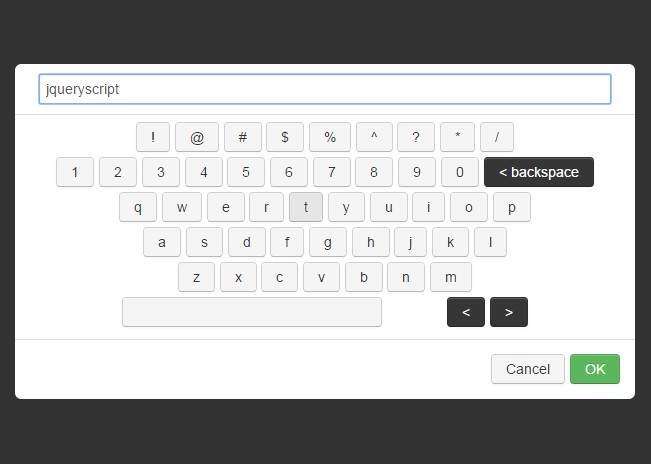

Width: languageNameTextMetrics.width * 17 VirtualKeyboardSettings.locale = languageListModel.get(index).localeName LanguageListView.positionViewAtIndex(currentIndex, ListView.Center) LanguageListView.currentIndex = currentIndex To select a new language, use the VirtualKeyboardSettings.locale property.īelow is an example that demonstrates a custom language dialog implementation: Dialog ) This item should be highlighted as the current item in the UI. The currentIndex is the index of current locale in the localeList. To get more information about a particular language, use the Qt.locale() function. The localeList parameter contains a list of locale names to choose from. It serves as a hook to display a custom language dialog instead of the built-in language popup in the virtual keyboard. This signal is emitted when externalLanguageSwitchEnabled is true and the language switch key is pressed by the user. externalLanguageSwitch( var localeList, int currentIndex) This property was introduced in QtQuick.VirtualKeyboard 2.4. The application can handle this signal and show a custom language selection dialog instead. When this property is true, the virtual keyboard will not show the built-in language popup, but will emit the externalLanguageSwitch signal instead. This property enables the external language switch mechanism. This property was introduced in QtQuick.VirtualKeyboard 2.0. The keyboard should be made visible to the user when this property is true. This property reflects the active status of the input panel. When the modal session ends, the item is reparented back to the original parent, and the z-value is restored. When an input field receives focus during a modal session, the InputPanel item is made a sibling of the Overlay, and given a z-value one above the Overlay's so that it stays on top of the user interface. Qt prevents modal popups from blocking the keyboard UI, as this would make it impossible to use the keyboard to write into a text field within a modal popup. today I landed a change to not show the cursor image if no pointer device (mouse or touchpad) is connected.Note: You can have only one InputPanel instance in your application. The improvements for input devices are also useful in other areas. So thanks to the integration of virtual keyboard KWin now supports touch much better on Wayland. We needed to add further support for touch events in KWin. We need to properly detect whether a real keyboard is available. In KWayland this is implemented in a transparent way and KWin announces support for both interfaces.Īnother area which needed lots of work is the support for input devices in KWin. As the QtVirtualKeyboard will only be available with Qt 5.7, we need to support Qt 5.7’s interface as well. Nevertheless I also added support for it in KWayland as otherwise we would not be able to communicate with applications using Qt 5.7. I’m not happy about QtWayland using not standardized interfaces as I think that’s very bad for compatibility. So I checked how it looks like in QtWayland 5.7 and alas the complete implementation changed, it’s using zwp_text_input_unstable_v2, which is not even in wayland-protocols. At one point I hit a wall and saw that the implementation in QtWayland is incomplete. First of all wl_text_input interface needed to be implemented as that’s what is used in QtWayland 5.6. Implementing support for the virtual keyboard was an interesting journey which required many unexpected changes and improvements all over the place. So on a notebook with a touch screen it’s possible to get the virtual keyboard even if there is (of course) a hardware keyboard. In addition there is a Status Notifier Item registered which allows to enable/disable the virtual keyboard independently of the hardware keyboard state. If a hardware keyboard gets plugged in the virtual keyboard gets disabled automatically. If an application supports it, then the virtual keyboard can input text from the compositor side.Īs you can see in the video the virtual keyboard is only enabled by default if no hardware keyboard is available. To support it we implemented the text input interface in KWayland. The virtual keyboard is integrated into KWin/Wayland making it part of our platform.

For Qt it means that the virtual keyboard is exposed to more users and thanks to the open source nature it means that we can upstream fixes.
#WORDPRESS VIRTUALKEYBOARD FULL#
The control supports the full range of regular, special and num pad keys, themes and a huge selection of predefined languages. For us this means that we have access to a high quality QML based keyboard. Samples for MindFusion Virtual Keyboard for WPF component that renders an on-screen keyboard with regular and extended looks. KWin 5.7 will integrate the new QtVirtualKeyboard module which is now available under GPLv3. Over the last weeks I worked on improved input device support in KWin/Wayland and support for virtual keyboard.


 0 kommentar(er)
0 kommentar(er)
